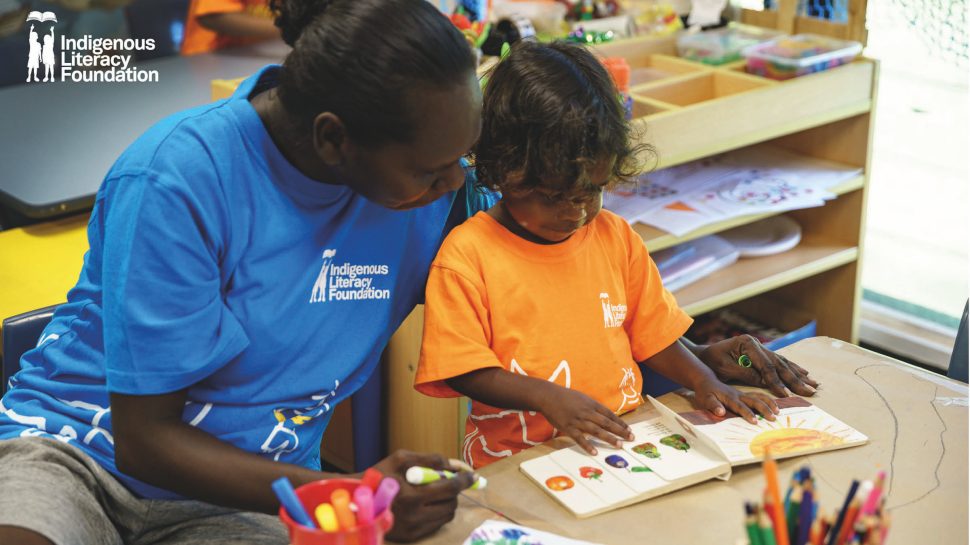5 ways the Indigenous Literacy Foundation is empowering remote Communities
Having delivered more than 190,000 books to remote Communities to date, the partnership between the Indigenous Literacy Foundation (ILF) and Australia Post is an important one that makes a difference to many children and families.

Reading is a key to future opportunities and choices , but it’s a key that not everyone has access to. That’s changing, thanks to the Indigenous Literacy Foundation’s Book Supply Program—an initiative that sees thousands of books delivered to children in remote Communities in Australia each year.
We take a look at some of the heart-warming ways the Indigenous Literacy Fund (ILF) program is helping kids and families across the country.
1. Instilling a love of reading
While access to books is something many of us take for granted, many remote Communities have no bookshops or libraries. Limited access impacts the achievements of First Nations children throughout their lifetime.
The ILF's Book Supply Program provides children and families with a range of books for babies, toddlers, children, teenagers and even families. .
This can be life changing. Books expand a child’s imagination and build knowledge. When a child reads, they develop an understanding of others and their own place in the world. And when they learn to love books, they are more likely to enjoy learning and do well in their education. This can only happen when they have access to lots of reading material.
2. Passing First Nations languages to a new generation
The ILF helps Communities to create and publish local stories in First Languages. In line with the United Nations General Assembly’s declaration of 2022-2032 as the Decade of Indigenous Languages, language preservation nurtures culture, as well as builds pride, wellbeing and a sense of identity.
Ross Herbert has worked with Australia Post for 16 years, and says delivering books to remote Communities for the ILF's Book Supply Program is one of his favourite parts of the job. “My mob is Wonnarua from up Singleton way,” he says. “The Book Supply Program … gives kids more opportunities to learn to read in their own language and there's also English. It would have been a really good thing to have when I was younger.”
3. Encouraging representation in the classroom
The rich diversity of First Nations cultures and languages in Australia is not as well represented in books and classrooms as they should be, and this can affect a child’s sense of self and identity. That’s why over 40 per cent of books delivered by the Indigenous Literacy Foundation feature First Nations authors and illustrators.
Zoe Cassim, ILF Program Manager believes that when children see themselves and their cultures reflected in stories, they see their place and value in the world.
"As with any child, when you can see yourself and your culture reflected in stories, it helps to build a sense of connection, belonging and pride, not only for you, but in the shared histories of this country," says Zoe. "There is enormous value in this acknowledgment that you, your culture and your peoples exist and are valued in our national identity as Australians."
The Indigenous Literacy Foundation works to provide this representation within the stories they help to publish and distribute. The books delivered in the ILF Book Supply Program are carefully selected by a panel of First Nations non-Indigenous educators, publishers and ILF Program staff to ensure they are culturally safe and relevant for the 400 remote communities the ILF currently support.
4. Enabling the skills to read
Being able to read opens doors to choices and opportunities throughout a person’s lifetime.
This involves a range of skills that can only be developed with access to books, including recognising sounds, holding books, learning how to turn the pages from start to finish, understanding the text, and interpreting what’s happening.
“I love that the ILF works with our mob with all the different languages and Communities in the rural areas. If they can learn to read, they can go into towns and read the street signs and things that everyone else takes for granted,” Ross says. “Education gives our people and our Communities more choice.”
5. Providing an opportunity for others to learn and give
The Indigenous Literacy Fund offers everyone the chance to learn about Indigenous literacy, and shares the longstanding and continuing wisdom, knowledge, skills and diversity of Aboriginal and Torres Strait Islander people. For example, the book Moli det Bigibigi, written by First Nations author Karen Manbulloo and illustrated by the Binjari Buk Mob, is a bilingual, ILF-published book available for a limited time in Post Offices and the Online Shop.
There are also many opportunities for us all to support the ILF through book swaps, donations, volunteering and advocacy.
Reading is a vital part of every child’s upbringing, and the ILF plays an important role in building the skills, and the joy, of reading in remote Communities across Australia.
Find out more about our commitment to Indigenous literacy and how we’re working with the Indigenous Literacy Foundation to supply books to remote Communities in Australia.


